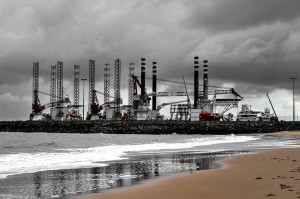A Look at How Modern Wind Energy Surveys Are Changing
 With rapidly increasing energy demands, combined with a growing interest in pursuing renewable energy options, it’s no surprise that alternative energy technologies such as wind and solar have begun to catch on in a big way over the past few years. In fact, according to the Wind Energy Foundation, wind power is the fastest growing source of electricity production in the world today. Within the United States, wind became the leading source of new electricity-generating capacity for the first time in 2012, with over 42 percent of all new energy capacity during that year coming from wind power.
With rapidly increasing energy demands, combined with a growing interest in pursuing renewable energy options, it’s no surprise that alternative energy technologies such as wind and solar have begun to catch on in a big way over the past few years. In fact, according to the Wind Energy Foundation, wind power is the fastest growing source of electricity production in the world today. Within the United States, wind became the leading source of new electricity-generating capacity for the first time in 2012, with over 42 percent of all new energy capacity during that year coming from wind power.
The rapid growth in the use of wind energy has given rise to the need for more land surveying services to support new wind developments. Wind energy projects have their own unique set of challenges that aren’t always found within traditional land surveying projects, which is why it can be helpful to work with a land surveying firm that has direct experience with wind energy surveys if you have a wind energy project on the horizon.
In this post, we’ll examine a few of the things that make wind energy unique and challenging from a land surveying perspective, and take a look at how new land surveying technologies are helping to address the challenges.
The Unique Challenges Involved With Wind Energy Surveys
The first main challenge companies face when conducting wind energy surveys is location. Wind energy developments often need to cover large areas of land in order to be viable as an energy source, and only certain locations are ideal for wind energy production. Compounding the issue is the fact that these ideal locations may be in isolated areas, making it difficult to secure land surveying information quickly.
In addition, wind energy also requires very accurate land surveys. The location of a wind energy turbine is a very important factor in how effective it is in producing energy, so the margin of error on wind energy surveys is comparatively low.
Responding to the Challenges
In order to create wind surveys that can cover large distances quickly, often in far-off locales, and provide a very high degree of accuracy, there are a variety of modern technological developments that land surveying firms can apply.
Unmanned Aerial Vehicles (UAVs)
Unmanned aerial vehicles, also known as drones, are one important technology that modern land surveying firms are using to address the challenges of wind energy projects. UAVs can cover long distances quickly by traveling as the crow flies, allowing them to avoid any terrain issues that would inevitably cause delays for land-based surveyors. In addition, Landpoint’s UAV platform can relay information back to engineers in the office as the information is captured, greatly reducing the amount of time a company has to wait in order to start taking action.
Finally, Landpoint’s UAV’s can be equipped with relatively inexpensive high-definition cameras, allowing them to capture land surveying images with a very high degree of accuracy. Combined with the fact that UAVs are able to fly very close to the ground and put themselves in locations that manned aircraft would have difficulty reaching, this helps UAVs provide the level of accuracy that wind energy surveys demand.
LiDAR
Another technology that helps support modern wind energy surveys is 3D laser scanning, also known as LiDAR. LiDAR works by having a series of scanners bounce thousands of laser points off of a building or terrain. As the lasers return, the scanner captures their flight path and compiles the data into a point cloud that can be used to create a very detailed 3D model of the site. LiDAR can be performed from the ground, or in conjunction with a UAV.
To learn more about land surveying technologies for your wind energy project, contact Landpoint today.



